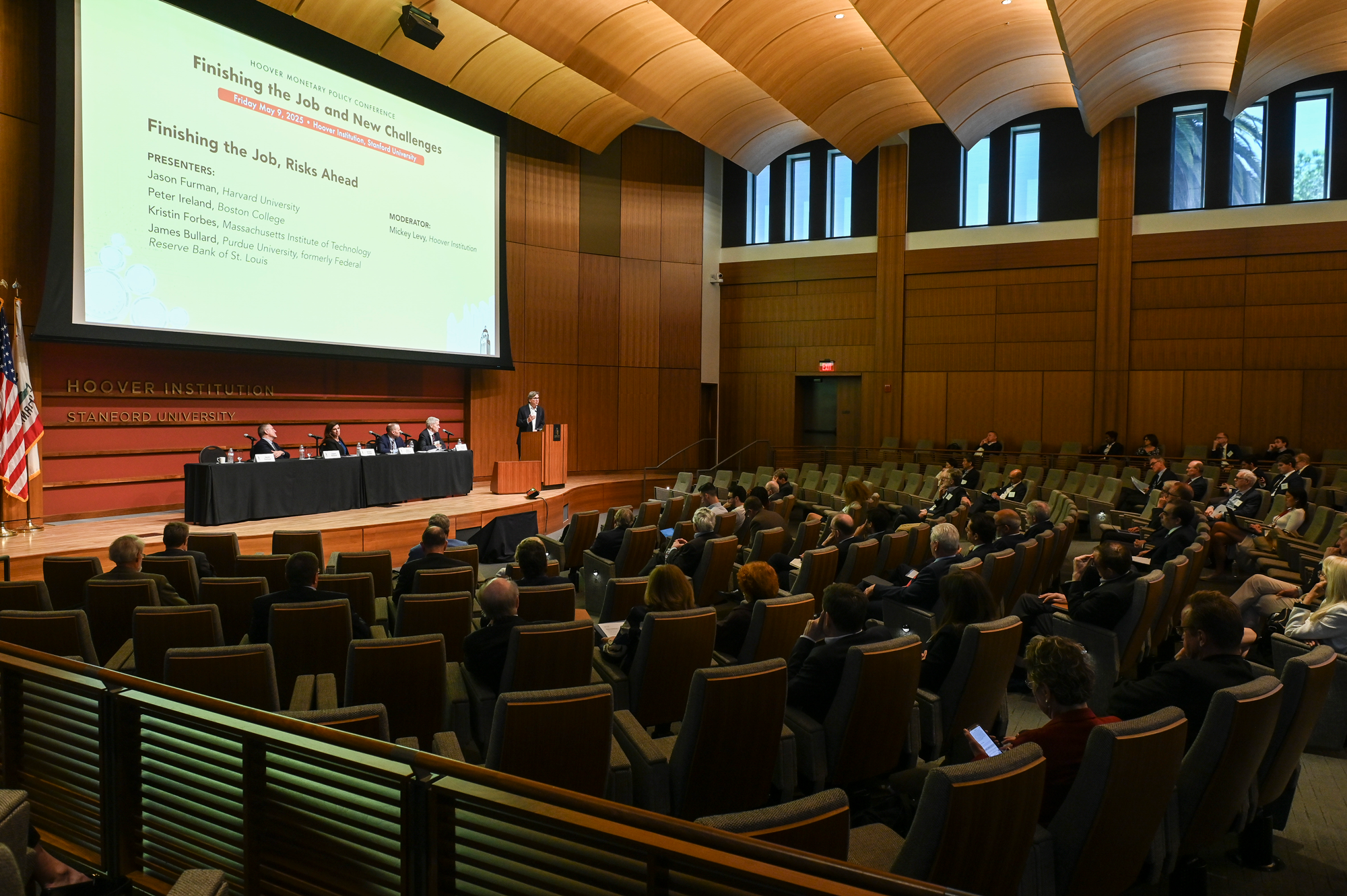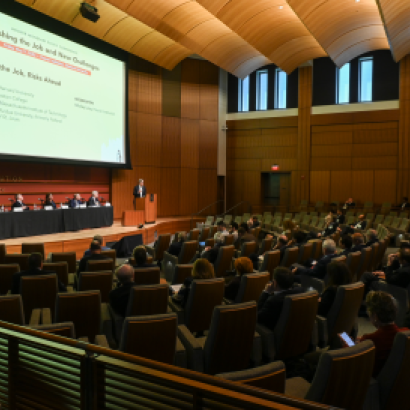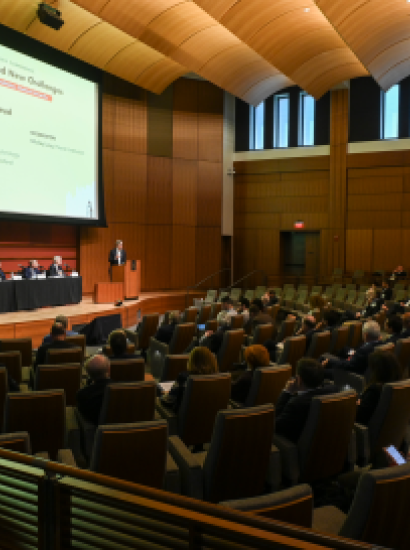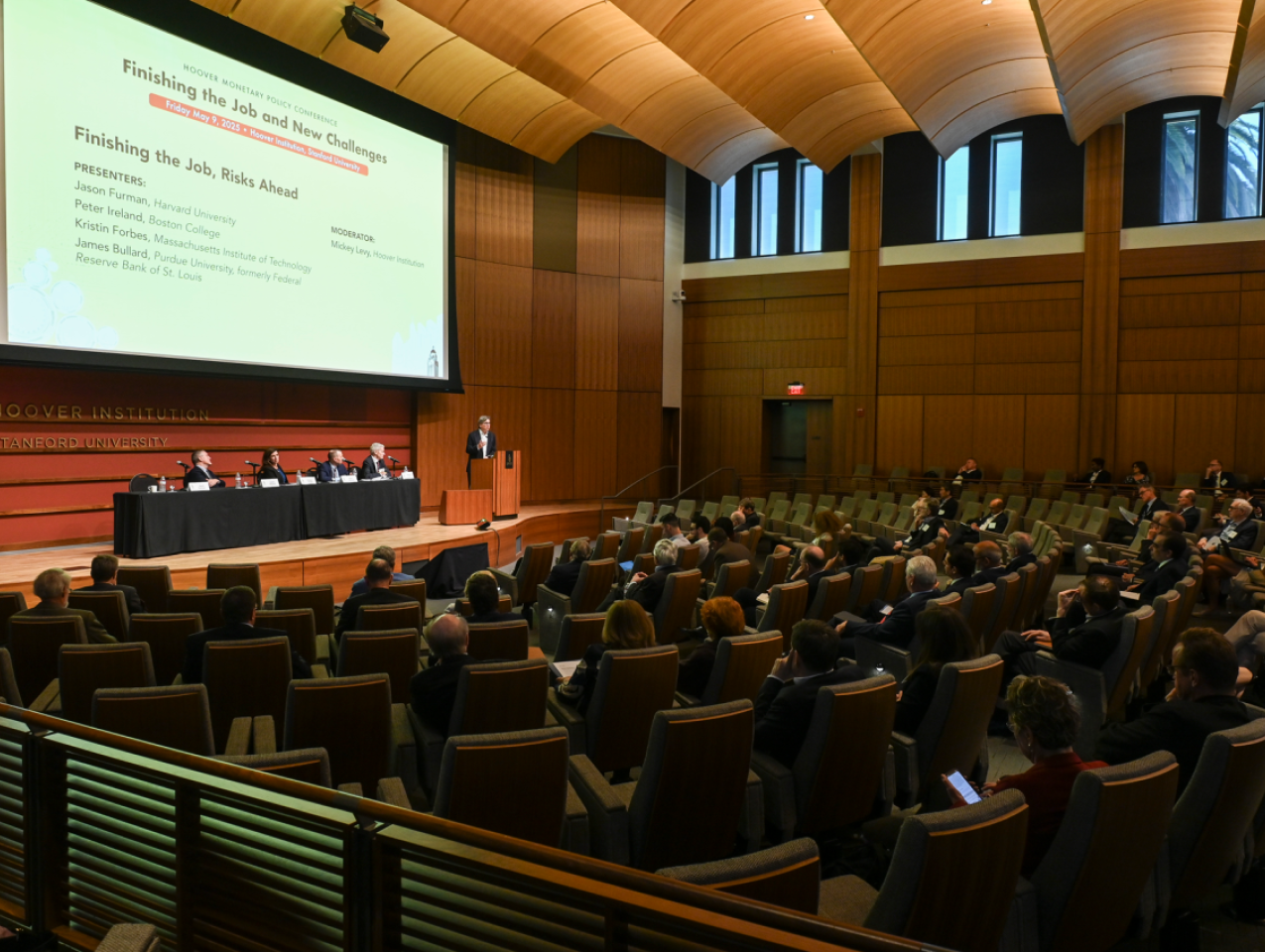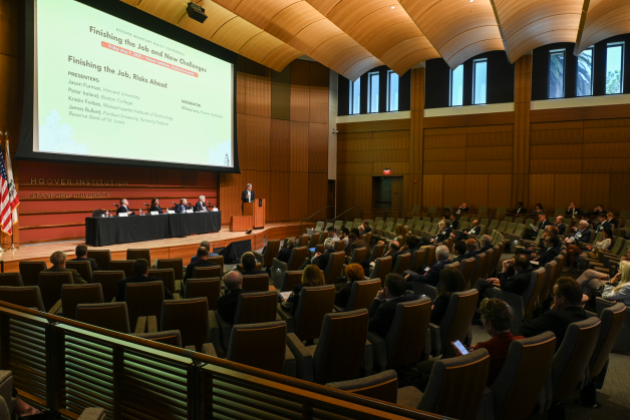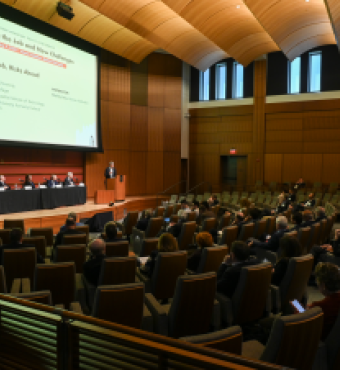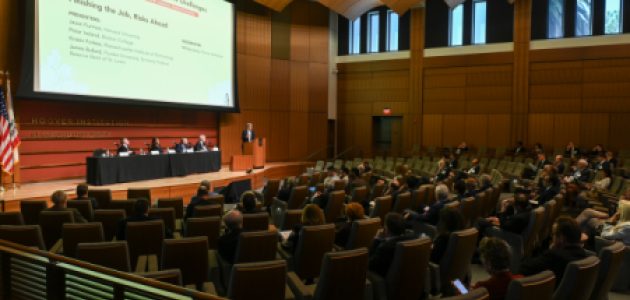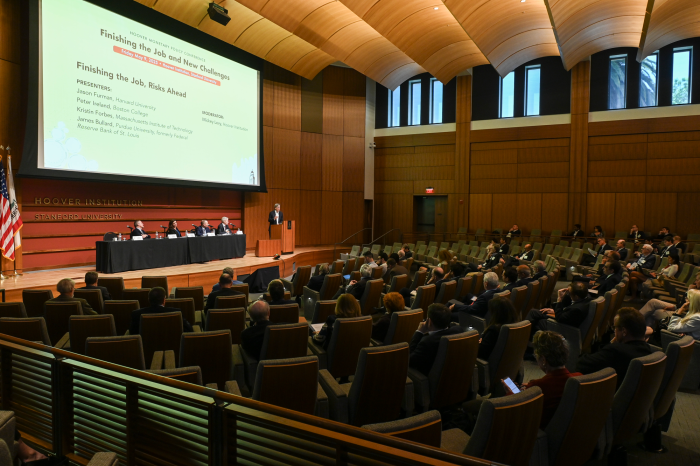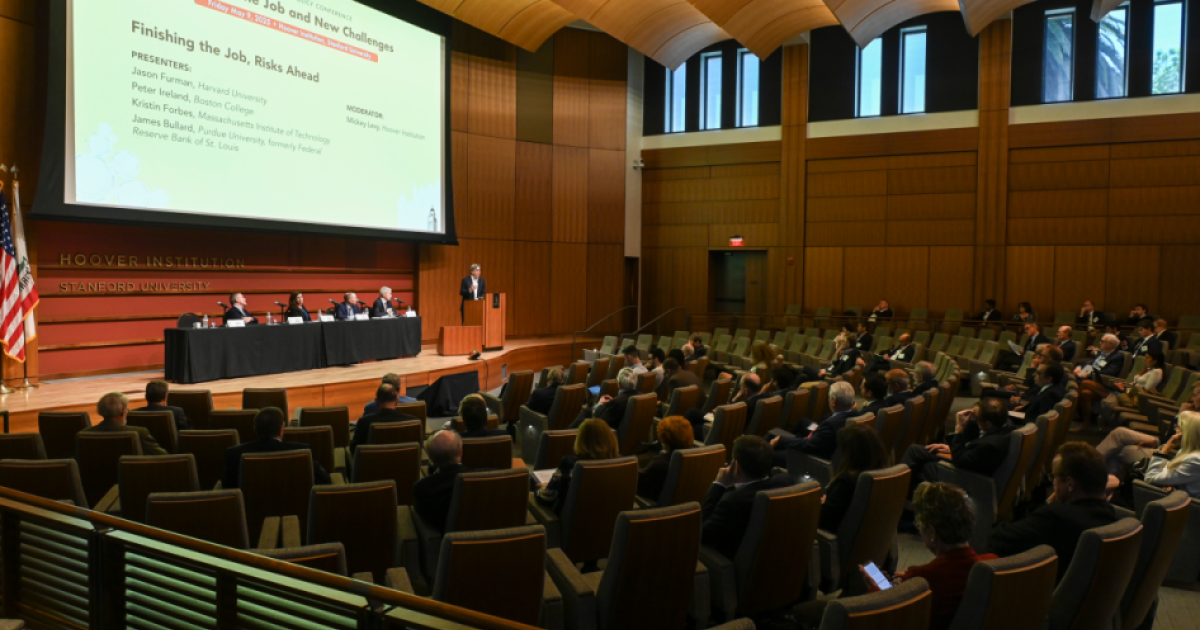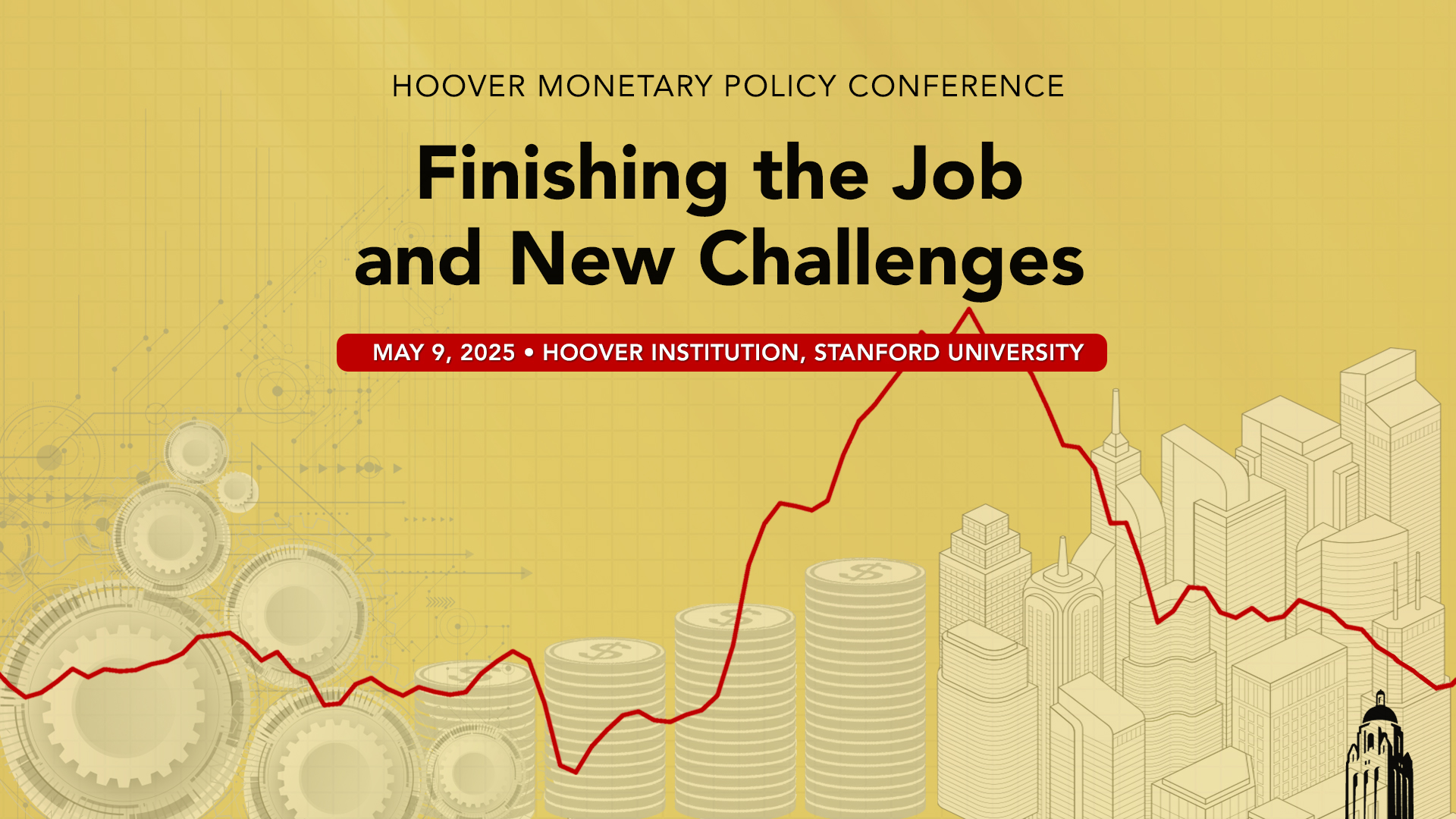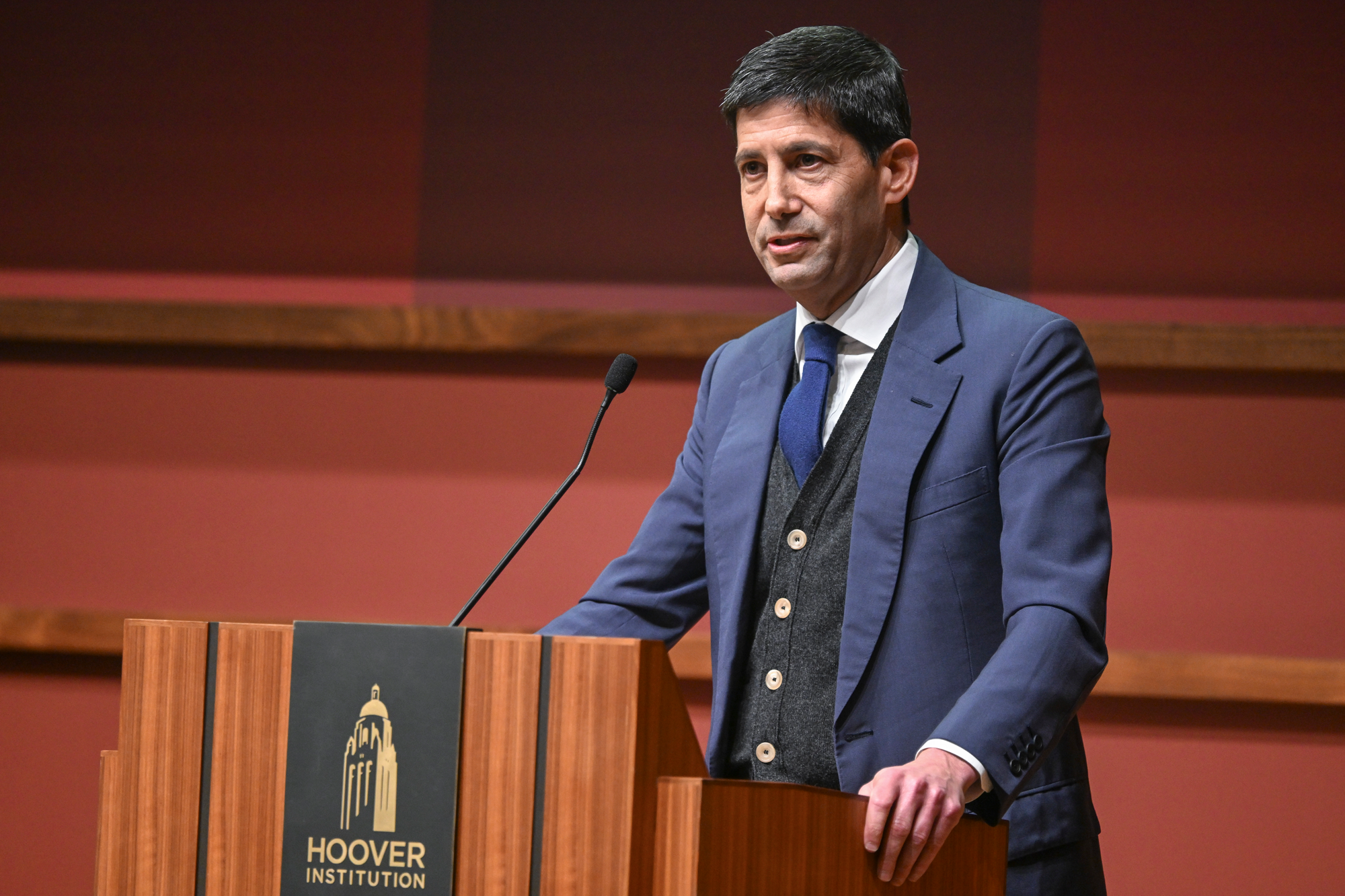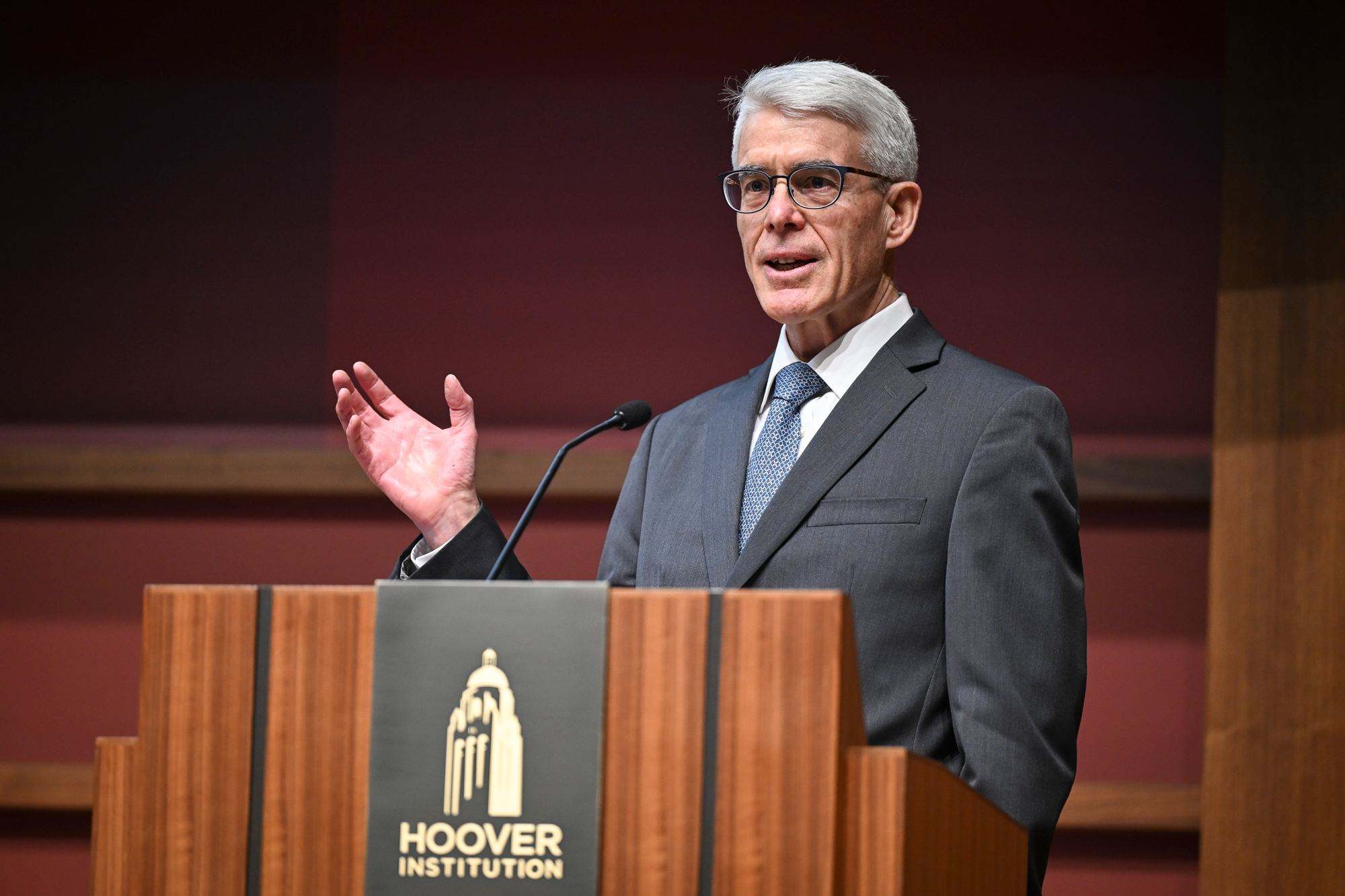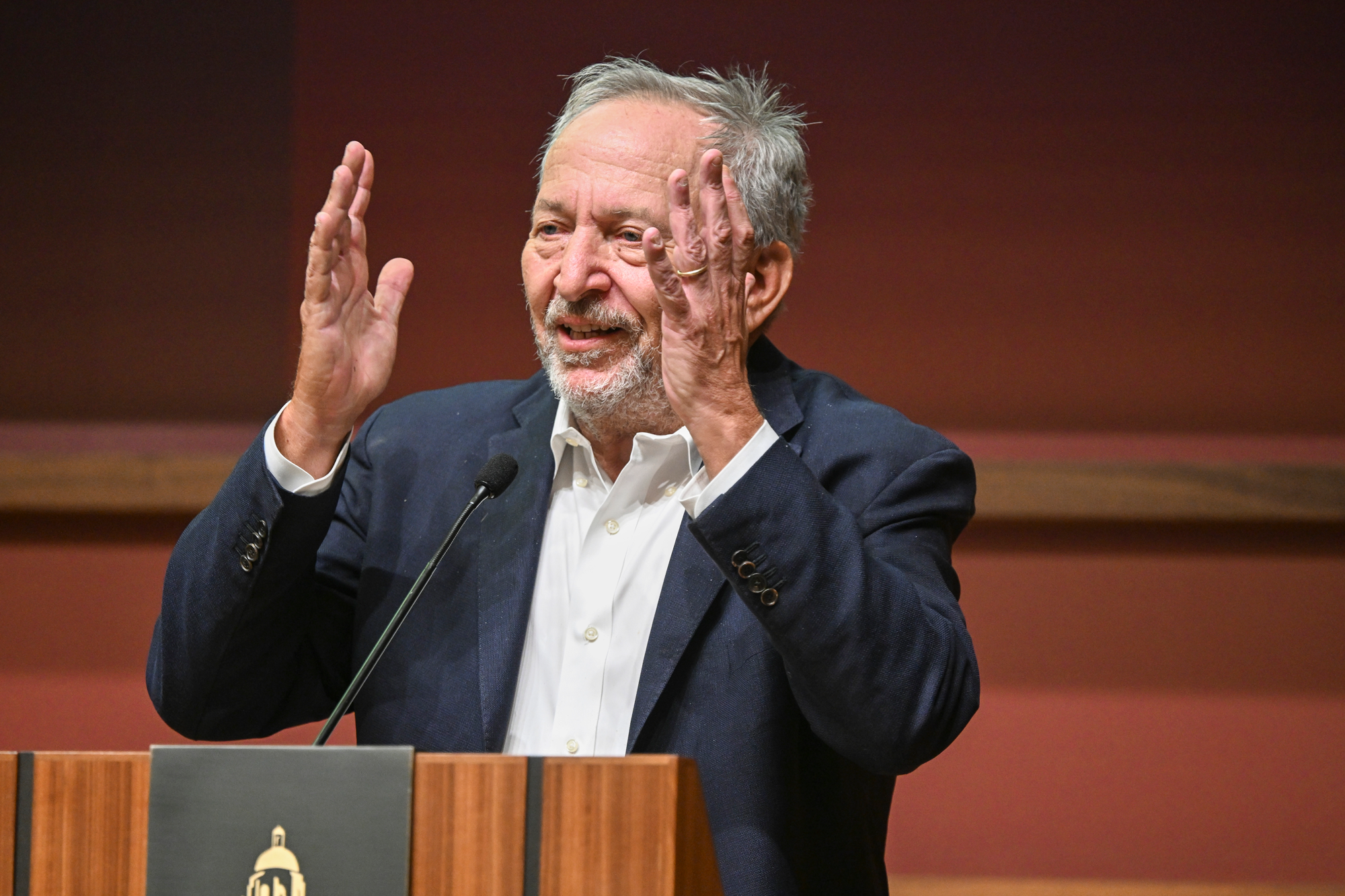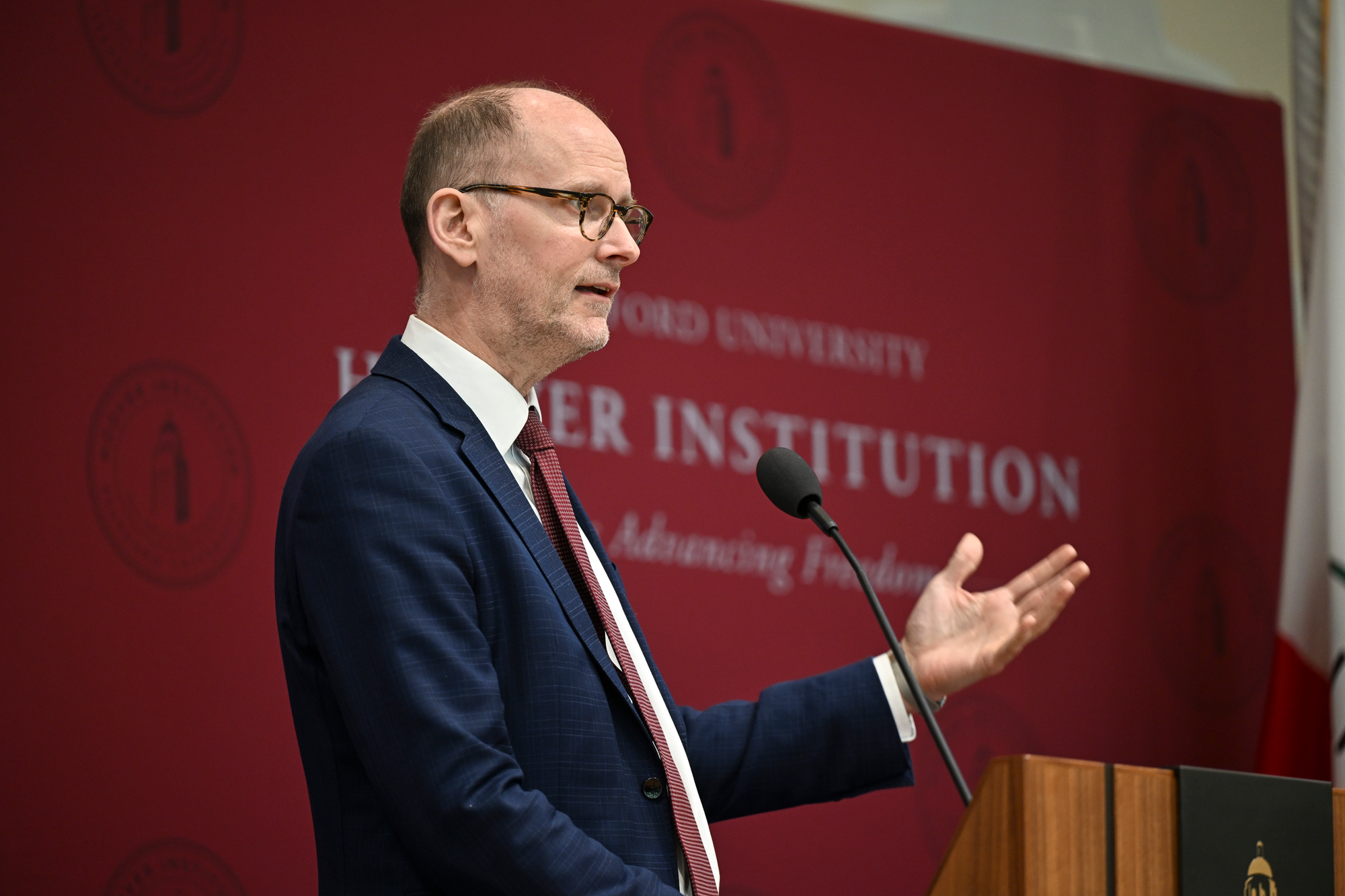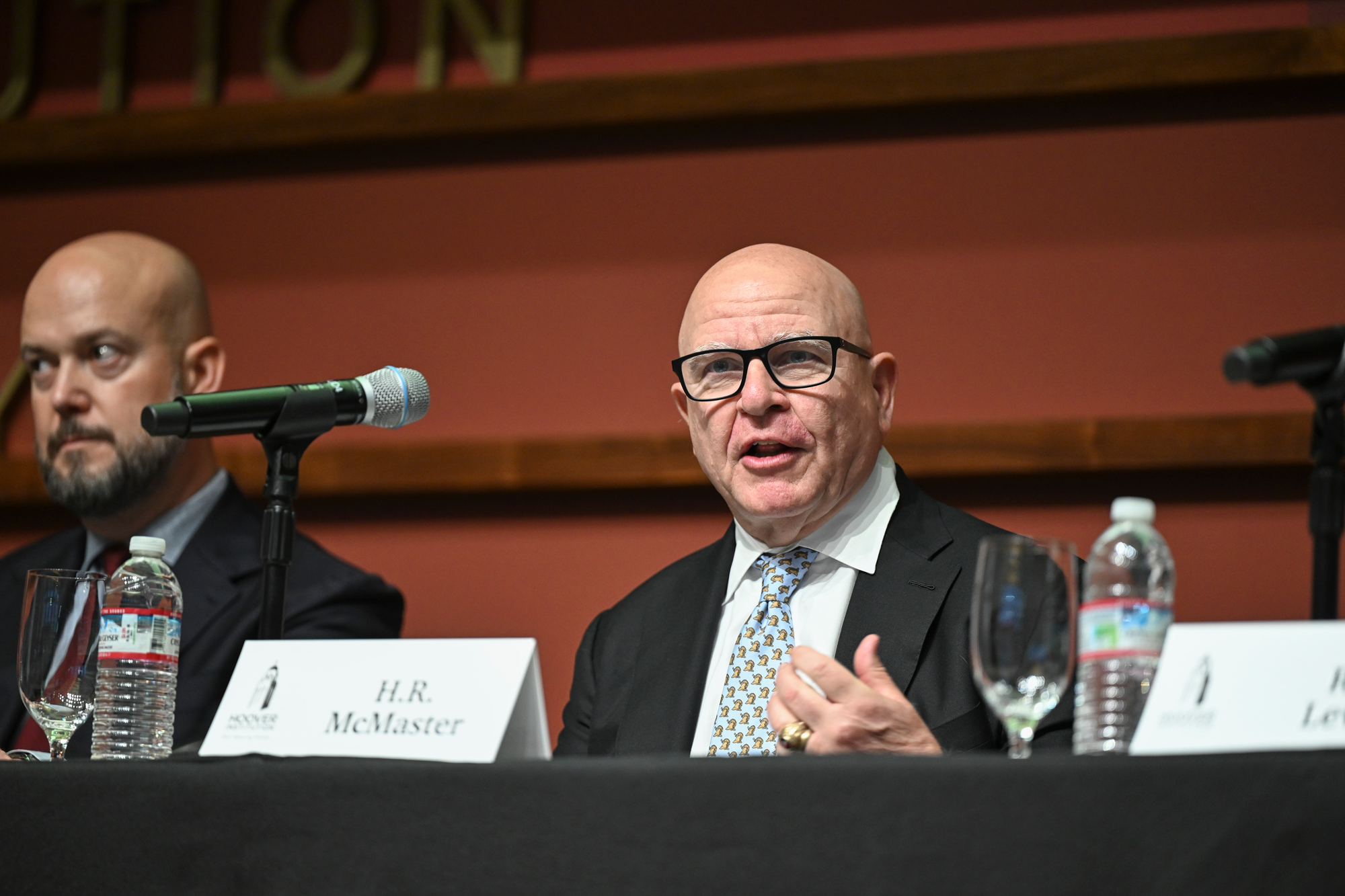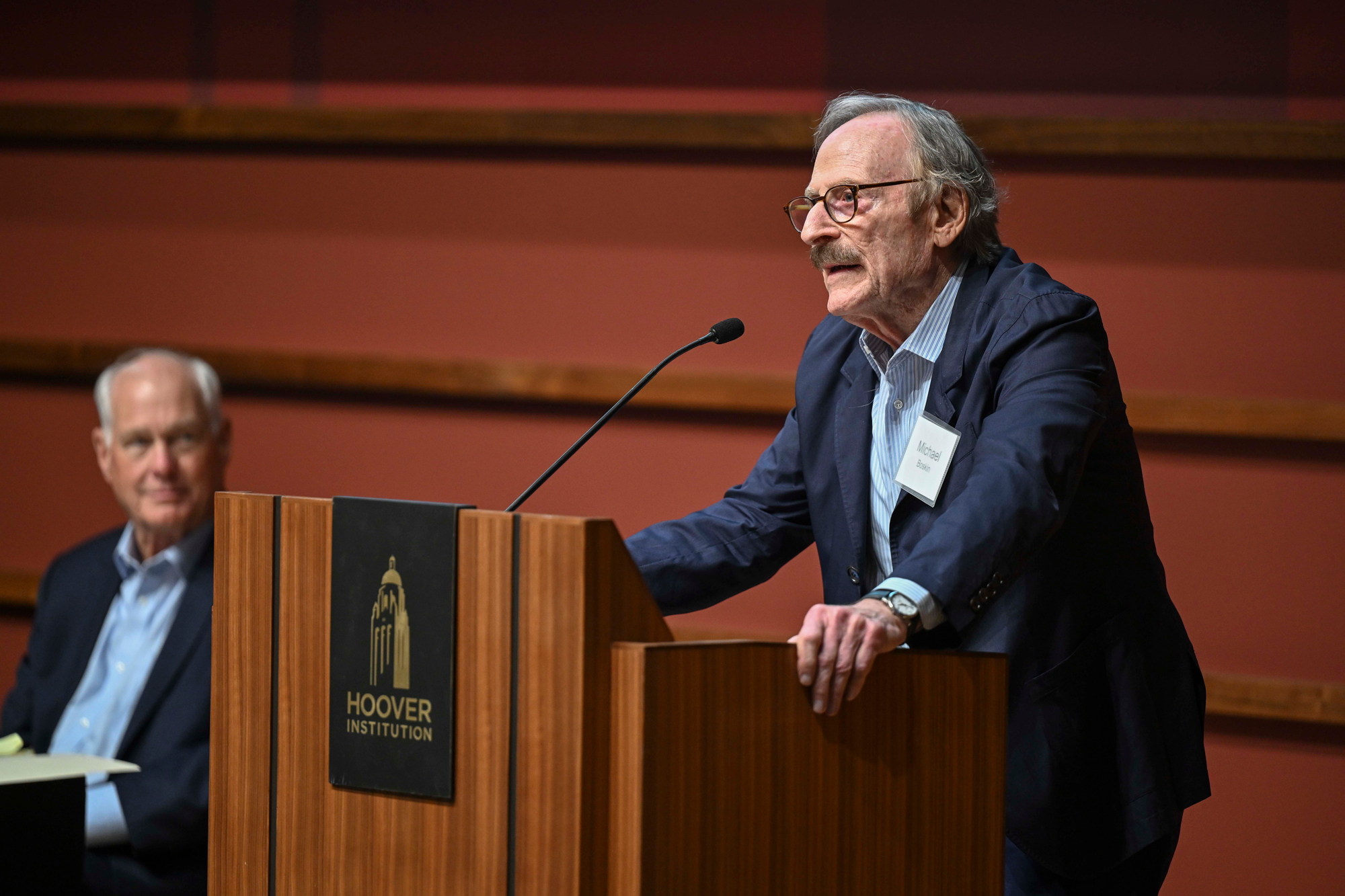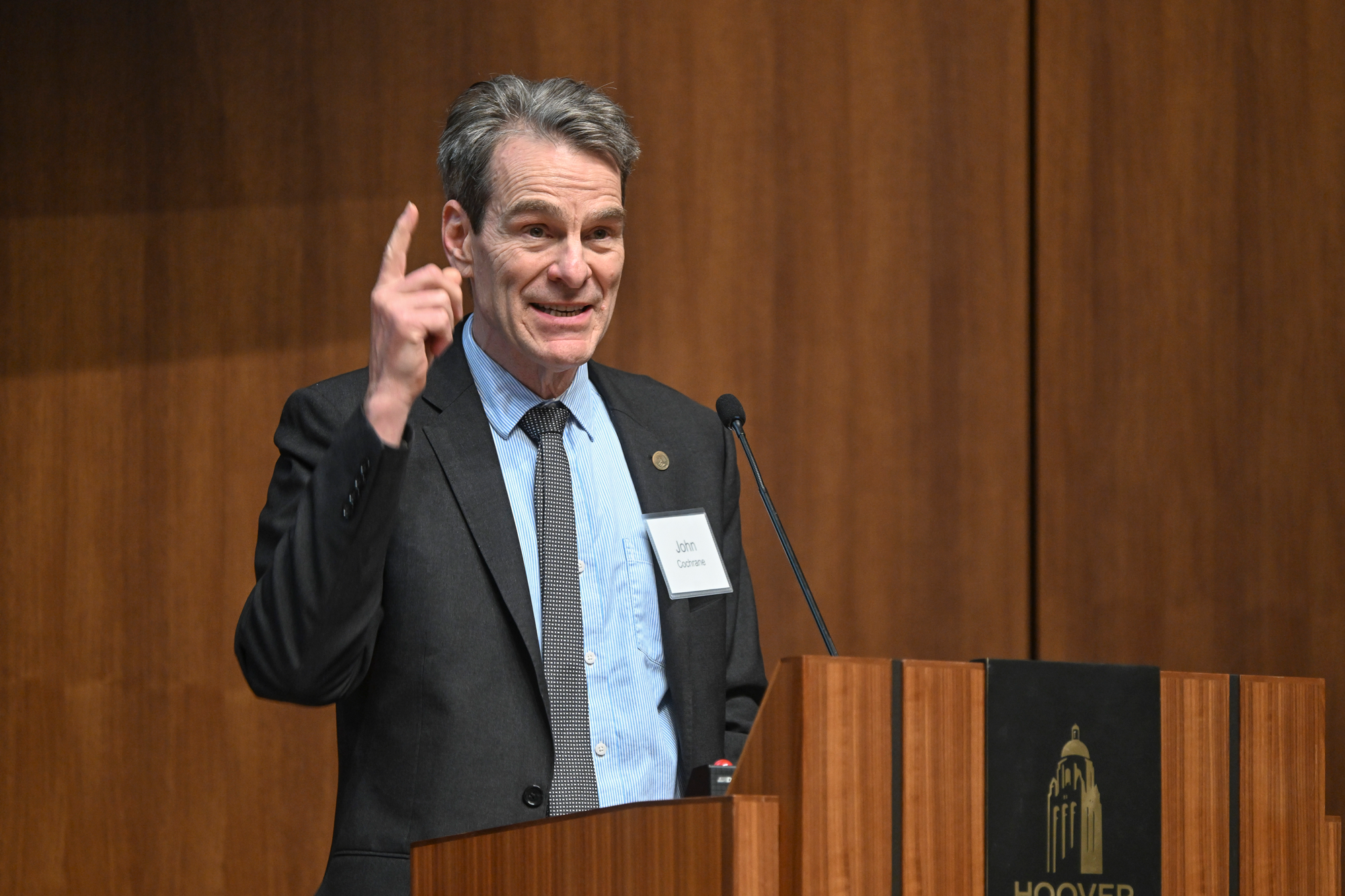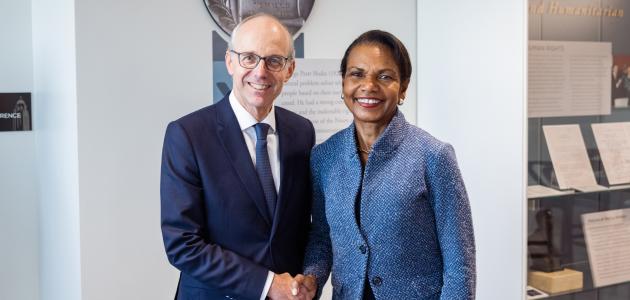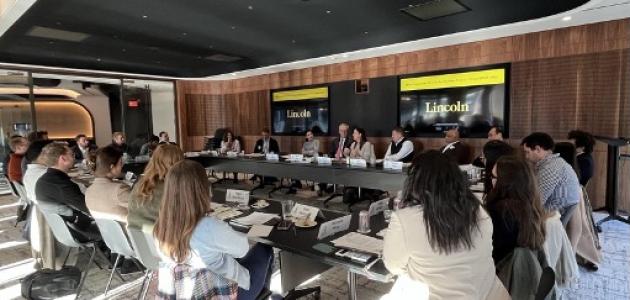Hoover Institution (Stanford, CA) — With persistent inflation either in the rear-view mirror or about to rise again, depending on whom one asks, world-leading economists gathered at Hoover on May 9 to ponder the future of monetary policy in a world facing increasing trade upheaval, high deficits, and continued digitization of finance.
Fresh after a day of celebrating the accomplishments of John B. Taylor, Hoover’s George P. Shultz Senior Fellow in Economics, economists gathered again to talk about the future of finance, the challenge of predictable trading relationships, and how continued high US federal spending threatens macroeconomic stability.
New Thinking About the Fed
In his talk, Distinguished Visiting Fellow Kevin Warsh told attendees that the path to lower inflation, greater stability, and more discipline is not complicated. It just requires a commitment to rules-based monetary policy, a smaller Fed balance sheet and a focus on the central bank’s core role.
He discussed monetary policy strategies, contrasting the “elegance and simplicity” of the Taylor rule— a benchmark for monetary policy evaluation first proposed by John Taylor in 1993—with today's complex central bank communications. He noted that in analyzing monetary policy over a thirty-year period, he has reached the conclusion that the trade-off between low inflation and low unemployment is not a constant. Warsh stressed that such patterns vary because people learn and adapt.
Warsh emphasized that central banking is a craft, not “arts and crafts,” and that inflation is ultimately a choice made by central bankers, not an inevitable result of external factors like pandemics. He argued for smaller central bank balance sheets and suggested that the Taylor rule works best when central banks maintain credibility with market participants.
Digital Currencies and Crypto-Backed Lending
In a separate panel concerning digital currencies, Senior Fellow Darrell Duffie spoke about using cryptographic signatures to “digitalize” US Treasuries, while colleagues Luis Garicano and Charles Calomiris explained how stablecoins, especially the US dollar–pegged stablecoin, are poised to become a very normal part of the banking sector.
Garicano showed how the total share of stablecoins throughout the world is dominated by the US dollar. Calomiris showed how cryptographic records of transactions utilizing the blockchain will enable faster payment settlement and lower the costs of connecting lenders and borrowers.
Tariff Uncertainty and Financial Markets
Over lunch, Torsten Slok of Apollo Capital Management—and former pupil of Hoover Distinguished Visiting Fellow Michael Bordo—spoke to attendees about how the Trump tariff agenda is roiling financial markets.
He said the Economic Policy Uncertainty Index, at least before the US-China détente of early May, had reached extremely elevated levels due to trade policy concerns, but that corporate bond spreads remain surprisingly narrow. This disconnect between "soft data" (market conversations about policy) and "hard data" (actual economic outcomes) poses risks if uncertainty persists at current levels.
Economic forecasters have begun to reflect stagflationary (higher inflation combined with higher unemployment) concerns in their projections, with consensus estimates showing higher inflation and lower growth for 2025. Various economic analyses suggest tariffs could add approximately 1 percentage point to inflation over the next twelve months, pushing overall inflation toward 4–4.5 percent while the Fed continues to signal rate cuts.
Slok showed data that indicates the trade war shock has severely tested market liquidity. The broker-dealer inventory of corporate bonds remains extremely low (around $30 billion) compared to the $10 trillion total corporate bond market. This situation can cause a liquidity issue in which the spread between what bond buyers want to spend and the price at which bond sellers are comfortable selling bonds widens significantly during market stress. Currently, it takes about five days, an agonizingly long time in modern financial markets, to trade a specific corporate bond.
Loan issuance, initial public offerings, mergers and acquisitions, and other capital market activities have declined substantially since trade tensions began escalating. Companies also face a "double whammy" of uncertainty about future earnings and higher discount rates, effectively shutting down capital markets, except for the highest-quality companies.
Warning about domestic legal uncertainty, external trade uncertainty, and the fluctuating nature of America’s alliances in the last several months, former Treasury Secretary Larry Summers told attendees that imperiling the rule of law has economic costs.
“We are at a moment when the proposition that the government of the US is a benign, thoughtful, law-respecting force is in question, in a way that has not historically been true in my experience,” he said.
He said he fears a future where “the world is united against us” because of recent erratic behavior.
Tariff Trouble
Several other scholars presented research on the history of trade wars, indicating that no nation who initiated one ever saw positive results, across two hundred years of economic history.
Looking specifically at the United States, Christopher Meissner of University of California, Davis, demonstrated a correlation between the per capita GDP of the US and the average tariff rates on imports throughout the late nineteenth and twentieth centuries, indicating the US got richer as tariffs declined.
The Need to Confront China
Moving to geopolitics, Senior Fellow H.R. McMaster spoke to attendees about the threat of a rising China, which is seeking to export its authoritarian model across the globe.
He said financial policymakers must correct basic misunderstandings they have about China’s leadership, which, he argued, is seeking to expand China’s territory into Taiwan and the South China Sea and wield its influence in international organizations.
“This is not a choice between Washington and Beijing; it’s a choice between sovereignty and servitude,” he said.
Fiscal Policy Dragging on Monetary Policy
Speaking about the potential for US fiscal profligacy to spill over into its ability to borrow at comfortably low rates, Senior Fellow Michael J. Boskin said that even if it isn’t definitive that this phenomenon is currently occurring, it’s probably prudent to start altering our fiscal trajectory now rather than years down the road.
“We know there are icebergs out there, and the wise path isn't to keep going, let alone to keep on doing what we're doing now by speeding up, but instead to alter to somewhat of a different course.”
Senior Fellow John H. Cochrane stressed that the Fed cannot fight inflation by raising interest rates unless fiscal policy cooperates, at the minimum by paying higher interest costs on public debt.
Preparing for New Risks
Looking to the future for the wider world, Isabel Schnabel of the European Central Bank spoke of the long-term expectations for inflation in the eurozone. She pointed out there are risks of higher inflation coming from both greater government spending in Germany, ordered by the incoming Merz government, and the continued uncertainty of US-imposed tariffs on the EU.
At home, Alberto Musalem of the Federal Reserve Bank of St. Louis said the US Fed must prioritize keeping inflation low. He predicted two future scenarios for inflation. In the first, tariffs on many US imports remain and businesses pass the costs of the tariffs to consumers as they run down existing inventory, with the impact on inflation concentrated in the second half of 2025. His second scenario entertains a rapid reduction of tariffs between the US and both the EU and China, in which the US economy could “remain close to the path that it was on,” prior to April 2025.







